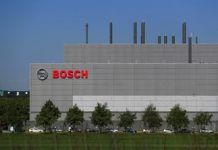EUSAS and Euralarm, hosted by Airbus, recently organised their second joint conference, which was this year on the topic of aviation safety and security. It showed once again the importance of technological development for an industry endeavouring to protect lives with a particular relevance to the aeronautics and air transport sectors.
The US Federal Aviation Administration reports yearly over 100 false fire alarms on airplanes, resulting in unplanned landings and turn-backs. The consequences for passengers, airlines’ reputations and managing flight routes make the issue of false alarms a priority for the companies providing fire detection devices for airplanes – and this is just one example of the challenges of safety and security on airplanes. Several organisations and companies gathered for two days on July 11th and 12th in Bremen, the second-largest Airbus site in Germany.
The event addressed the special challenges of fire detection and extinguishing in airplanes, airports and in the aviation industry. From the depleting extinguishing agent reserves worldwide, to the large number and sheer size of airport buildings and hangars, which require specific solutions on top of traditional fire detection technologies. Further are the financial and time constraints for compliance testing in an industry where efficiency and safety are a must. The criteria used for fire detection testing on airplanes are stringent and has led the aviation industry to ask for the most advanced technologies to be used on aircraft.
Another issue for the industry is the replacement of Halon, a gas that has a high global-warming factor and attacks the ozone layer in our atmosphere. This fire suppression agent is used in cargo compartments, as well as for turbine fire due to its favourable characteristics. The production of Halon has now been discontinued and the the overall current progress on the replacement of Halon was discussed along with details of a potential alternative green fire suppression system.
Many solutions presented at the conference were based on computer simulations. Real life fire extinguishing tests on airplanes are part of the certification process of new airplanes. To avoid environmental consequences, a newly developed simulation technique can now predict the fire suppressant’s behaviour inside the cargo compartment. Another illustration was the research project ORPHEUS, which allows the computer-simulated modelling of an airport’s evacuation, as well as smoke spread prediction in case of fire.
On the topic of airports and hangars, the width and height of the buildings is generally the main problem, as was explained by Securiton’s Stefan Brügger. Automation and integration of electronic safety and security solutions presented by Maarten Wings from Bosch, while Roland Voraberger from G+M Elektronik, a company in Switzerland, provided a concrete example for the connection of voice alarm systems to fire alarm systems, which is not as straightforward in airports as it would be in smaller buildings. The challenges of fire detection in buildings with high-ceilings, which is a case for most modern terminals, or half open hangars could be overcome in the future with video-based detection technologies or thermal radiation-based fire detectors, presented respectively by Soeren Wittmann from Bosch and Dr. Simon Trippler together with Dr. Jörg Kelleter from GTE Industrieelektronik. Video is, of course, also useful when it comes to security with video analysis against intrusion in security zones being presented by Securiton’s Thomas Hermes and Michael Seidl, from the Frankfurt Airport, the busiest in Europe by cargo traffic.








